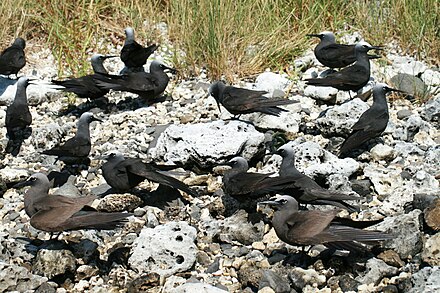Lord Howe Island - island in the Tasman Sea between Australia and New Zealand, part of New South Wales
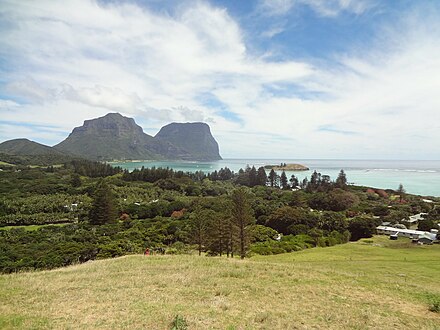
Understand
History
The island was discovered in May 1788 by the HMS Supply, on a voyage from the newly settled Sydney town. There is no evidence of any human habitation of the island prior to this. The island soon became a supply point on trips to Norfolk Island, as well as a base for whaling.
The lagoon of the island was used until 1974 as a stopover point for flying boats to America and New Zealand, as well as to bring visitors to the island.
Geography

People
The population of Lord Howe Island is approximately 350 people. Only 400 tourists are permitted to visit the island at any one time. Unlike on an island resort, the people who are providing services to you are likely to be residents of the island. Some families have lived there for generations. The people have a genuine affection for the island, and knowledge of the best spots to snorkel, walk, and picnic. The non-existent mobile phone network is substituted by a people network, with messages passing between locals and tourists when they encounter each other around the island. If you are seeking genuine warmth rather than the superficial niceties, the people of Lord Howe won't disappoint, with the superficial niceties being a bonus.
Climate
The best weather on Lord Howe is undoubtably in summer. The warm summer months, tempered by the oceanic breeze, matches the island outdoor lifestyle. Winter is cooler, rainier, and windier. Tropical cyclones do occur on the island, but they are rare.
Get in
By plane
Lord Howe Island has a small airport, with a notoriously difficult landing. This restricts operations to small turboprops only. QantasLink fly daily (more frequently in summer) from Sydney using Dash 8-200 36 seater aircraft, while Eastern Air Services operate small 10 seater twin props to Lord Howe a few times a week from Newcastle, Port Macquarie and Gold Coast. Flight time is roughly two hours. If you have anything in the way of significant luggage (or fear of flying) you'll likely find QantasLink the better option.
Due to the limited number of seats, it is essential to book in advance, at the same time as you book your accommodation. Whichever route you choose, fares hover around $1000-$1200 return, making this by some margin the most expensive domestic air route in Australia. Qantas do release a (very) limited number of reward seats which can be purchased with frequent flier points. As Qantas set the "price" in points for their flights by distance rather than the equivalent cash fare, this represents good value.
The airport at Lord Howe has a terminal building with a kiosk open for departing flights, toilets, and a waiting area. There is also an outside area where you can sit and watch the arrivals and departures.
All services are met, and you'll be asked where you are staying as you arrive.
Weather conditions can sometimes be hazardous for landing on Lord Howe, and it's not unheard of for flights to make the entire trip to the island, only to fail to land and return back to the mainland. This is particularly the case in the winter months. Aircraft weight and balance frequently sees luggage left behind, to travel on a flight the next day or later the same day.
If you are planning to dive on Lord Howe Island, bear in mind that there is no decompression chamber on the island. Be sure to follows the rules regarding diving within 24 hours of flying.
Get around

Walking is easily possible around the town and between most accommodation and the beaches.
The island's roads have a slow speed limit.
There is no taxi service or public transport on the island. All accommodation providers include transport to and from the airport on arrival, and transport to dinner at 6:30PM. The restaurants all provide transport back to your accommodation after your meal.
- Wilson's Hire. Some accommodation provides bicycles, but Wilson's provides the bikes for everyone else. They have lots of bikes here, but like everywhere else on Lord Howe, it pays to book in advance. from $8 per day
See
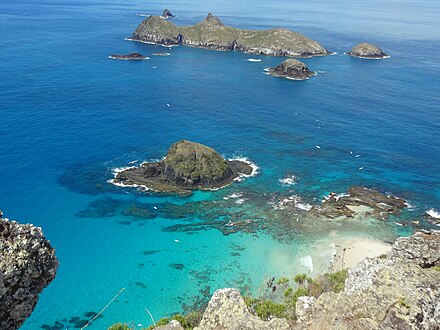
- Botanic Gardens. There is a small botanic garden on Lagoon Road just past the museum. However, the whole of Lord Howe Island is a botanic garden, with many examples of large Banyan Trees and Pandanus scattered along the front of the Lagoon. free
- Lord Howe Island Museum, -31.527987°, 159.0665°, +61 2 6563 2111. daily.. One room outlining the history of the island, and another highlighting its environmental features and world heritage status. Entry by donation
- Catalina Wreckage. The Catalina Monument is adjacent to the bike parking at Old Settlement Beach. The Australian Air Force flying boat crashed while attempting a landing on the lagoon in bad weather, striking the top of the Malabar Ridge above. The wreckage of the Catalina still lies in place on the side of the ridge facing Old Settlement, visible from the path behind the beach.
Do
Lord Howe Island is very much geared up for outdoor recreation: bush walking, trekking, guided and self-guided walks, fish feeding, swimming, surfing, Scuba diving, snorkelling, kayaking, bird-watching and reef walks are all popular. Sports are also an option: golf, tennis and bowls especially. Deep sea, rock and shore fishing charters are available. For the more laid back, options include picnics, barbecues, bicycling and dining out. Available for hire are golf clubs, tennis racquets, bicycles and helmets, scuba and snorkelling gear, paddle skis and spy boards.
- Tennis. The court is opposite Thompson's Store. Hire is $10 per hour, book at the store. Racquets and balls are available.
- Golf. Clubs are available at the clubhouse. The course is meticulously maintained. Green fees of $40 are due, and payable via an honour system at the clubhouse.
- Snorkel. There is snorkelling available off just about every beach on the island. Ned's Beach is the jewel in the crown, with corals, tropical and reef fish just metres from the shore. Some of the best accessible snorkelling is at Escott's Reef, near the edge of the reef off the airport. It is a fair swim from shore, and a boat trip may be in order for this one. Comet's Hole is the best place to see the Galapagos Shark, around 100m offshore from the airport runway. Hawkbill turtles can be seen around the lagoon and Ned's. Green turtles are best seen munching on the sea-grass off Old Settlement Beach. You can rent snorkels at Wilsons, or on the beach at Ned's.
- Dive. Several operators run SCUBA trips to the surrounding reef areas, and to nearly Balls Pyramid.
- Glass Bottom Boating
- Kayaking
- Stand up Paddleboards
- Bushwalking. The most popular walk is up to Malabar Ridge. The best approach is from the track that meets the road about 50m short of Ned's beach. Like everything else on Lord Howe, once you leave the lagoon some hills are involved. You ascent the ridge, to lookout over the birdlife living on the cliffs overlooking the turquoise sea. You can walk further to Kim's lookout, and descend via the North Bay track to Old Settlement Beach. Serious walkers can pre-book full-day guided walks up Mount Gower.
- Fishing. Spear fishing is not permitted.
- Fish Feeding. The food dispenser on Ned's takes $1 coins.
- Jetty Jumping. A favourite with the kids at high tide.
Buy
Money
Only Australian currency is accepted on Lord Howe Island. Foreign currency and travellers cheques are not accepted or exchanged. Credit cards are accepted widely but not everywhere. A surcharge of around 2% applies to using credit cards at many places, with Australian EFTPOS being an alternative for which there is no surcharge. There are two banks on the island, Westpac and Commonwealth open some hours on weekdays. The post-office is an agent for some others. There is a single ATM on the island, just inside the entrance door to the Bowling Club, with the entrance door (like most other doors on Lord Howe) usually open.
Island prices are generally higher than mainland prices owing to freight costs and the size of the market. Expect to pay a little more than you would in a convenience store in a capital city, say around $5.10 for a litre of milk, and around the same for a loaf of bread or $9.90 for a loaf of sourdough.
Supplies
There are three small shops on the island that carry groceries, liquor, fruit, vegetables, pharmaceuticals, clothing, souvenirs and snacks. You have to choose from what is available. If supplies of an item dwindle, don't expect to see it restocked until the day after the ship arrives.
- Thompson's Store. 9AM-6PM. Small range of groceries, drinks and ice-creams. A handful of snorkels to purchase and some beach clothing.
- Joy's Shop. Just before Heartbreak Hill on Middle Beach Road, up from the museum. The largest range of food and other supplies on the island.
- The Top Shop. The place to buy fresh seafood caught on the island. Will deliver to your accommodation. Limited opening hours
Local produce
There is also a small hairdressing salon, limited beauty and masseur facilities and arts and crafts.
- The Beach Boutique
Eat

The general arrangement is to book your restaurant for the night before noon. There is usually a booking sheet out the front of each restaurant for this purpose if you want to cycle around, or you can call them from the free phone out the front of Thompson's Store. You should then put your name down at your accommodation for a lift, and the restaurant will then provide you with transport home. Because of this arrangement, with accommodation providing a lift at 6:30PM, dinner commences at this time.
For lunch, Thompson's Store sells hamburgers around $8 each 11AM-2PM. You can get rolls and sandwiches from the Anchorage or from the Coral Cafe for around $15 until 2PM.
Most accommodation has some facilities for preparing your own food. There are barbecues on the beach, well stocked with wood, but you will need matches and probably firelighters.
You should have a good plan for where and how you are eating each day. Restaurants do book out. The lunch take-away option is gone from 2PM. Shops close for provisions around 6PM. Making a decision on dinner at 5PM can mean you go hungry.
- Pandanus. Modern Australian on week nights, with a slightly cheaper Asian menu on Saturday and Sunday nights.
- Beach House on the Moon. Only open two nights a week. Communal eating, as reasonably priced as anywhere.
- The Anchorage. Serves breakfast, lunch and dinner, with bookings only really necessary for dinner. Even if you haven't booked, you may still get a table here. Right in the centre of town, with Steak and seafood to match any on the mainland. Around $35 for a main. Also good for a coffee and a muffin any time of day.
- Bowling Club. Pie night Monday night. Closed for dinner Saturday night.
- Golf Club. Pizza night Sunday night. Make sure to book well in advance to watch the sun go down from the balcony.
Drink
There are no pubs on Lord Howe, but there is a bar at the Bowling Club and the Golf Club with a mix of locals and visitors. Friday night tends to be the biggest night, but even then things tend to be quiet by 9PM. Most people aren't at Lord Howe for the nightlife.
Sleep
Lord Howe Island is small, so location doesn't usually come much into play when deciding where to stay. However, there is a small ridge along the island, and some accommodation is at the top of the hill. Due to the strict limit on visitors and the limited accommodation, it is absolutely essential to book your accommodation in advance, at the same time as booking your flight.
- Arajilla Retreat, Old Settlement Beach, +61 2 6563 2484, reservations@arajilla.com.au. Doubles $848-1,056 2017-06-19
- Capella Lodge, +61 2 9918 4355. Doubles $550-590
- Lorhiti Apartments, +61 7 3366 8000, lorhiti@bigpond.com.au. Doubles $90-250
- Pinetrees, +61 2 6563 2177. Doubles $300-310
Connect
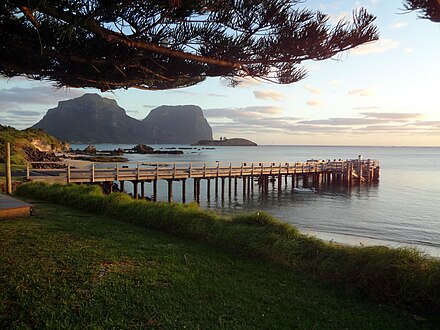
Internet (two terminals + Wi-Fi) is available for a fee at the visitor information centre when it is open. Some accommodation providers have Wi-Fi or terminals as well. The Internet connections aren't particularly fast, and if something breaks that needs replacement, it can be unavailable for weeks.
Australia Post has a postal agency on Lord Howe Island open M-F 9AM-1PM & 2PM-4PM. From Sep-May airmail is dispatched and received every day except Friday. In the winter months, mail is dispatched whenever flights operate.
The MV Island Trader provides a surface freight link with Port Macquarie every fortnight. The arrival of the boat can be quite an event in itself. Every local will be able to tell you when the boat is due, and the whole population can turn up at the post office to collect their consigned shopping. You'll see the pallets heading up from the boat to the shops, and soon after the fresh produce and other selections hit the shelves. Expect whatever you see come ashore to be on the menu and in the shops for the next couple of weeks.
Stay safe
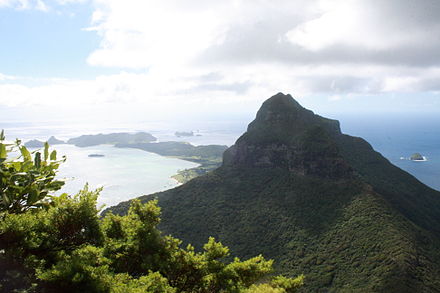
Cope
The island has a small hospital, with a doctor resident on the island on-call. He is used to stitching up all kinds of bicycle related falls, but for anything more serious a medivac to the mainland may be required.
Go next
Unless you arrived by yacht or private aircraft, the only connections are back to the Australian East Coast or New Zealand.
Lord Howe Island
lordhoweisland.infoNew South Wales
Primary administrative division

